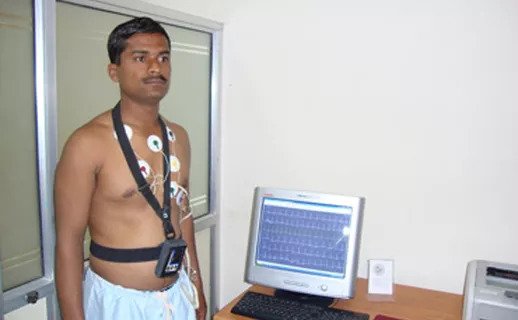
A Holter monitor is a battery-operated portable device that measures and records your heart’s activity (ECG) continuously for 24 to 48 hours or longer depending on the type of monitoring used. The device is the size of a small camera. It has wires with silver dollar-sized electrodes that attach to your skin.
Holter Monitor is an electronic device which is superficially placed on your heart. Placing of this device requires least efforts and is completely painless. When a doctor needs to know the heart’s activity of his patient for 24 to 48 hours, then the patient is told to wear this device. This device gives us Ambulatory Electrocardiograms, as it provides us ECG of the patient on the go.
This monitor consists of small wires and silver coin sized electrodes attached with it. You carry this device by wearing it wherever you go and whatever you do, throughout the day.
The need of a Holter monitor arises, as cardiac symptoms many of the times are not consistent throughout the day. Also, cardiac symptoms like abnormal heart rhythms might be disruptive and arise during some specific activity. Hence an ambulatory electrocardiogram is needed so that your doctor will get an idea about your slow, fast or irregular heartbeats; generally known as arrhythmia.
Wearing the monitor will tell your doctor things like:
• How and if your medicines are working.
• The reason behind your symptoms like dizziness, faintness or the feeling that your heart is racing or skipping beat, palpitations.
• Whether your heart is getting enough oxygen to meet its needs or not.
The doctor will attach the electrodes to your chest and the wires are of it are as long as you can easily keep the monitor in your pocket or your purse or even tie that across your waist. You have to carry out all of your daily activities with the device on you. You will not bathe, swim or take shower with the device on. You have to take care that you do not linger around high voltage areas, metal detectors as well as X-ray machines.
After the desired time elapses, the electrodes will be removed and data will be taken for studying and further diagnosis. This is a completely pain-free procedure.

